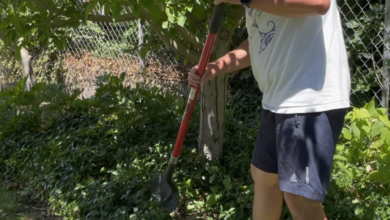Green Up Your Lawn/ A Guide To Fertilization

Why fertilize your lawn?
Fertilization is the process of applying nutrients to your lawn to promote healthy growth and development. The three main nutrients that your lawn needs are nitrogen, phosphorus, and potassium. These nutrients are essential for your lawn to maintain its color, strength, and resistance to disease and pests. Normal use and wear and tear of your lawn from weather, pets, and humans requires regular fertilization to keep it healthy.
Nitrogen is the most important nutrient for your lawn as it is responsible for the green color of the grass. Phosphorus helps with root development and growth, while potassium helps the grass to resist disease and drought.
Fertilizing your lawn not only helps to keep it healthy and green, but it also improves its resistance to environmental stressors such as extreme heat, cold, drought, and foot traffic. A well-fertilized lawn can also help to reduce weed growth, as the grass becomes denser and more competitive.

When to fertilize your lawn?
The timing of fertilization is crucial for the success of your lawn. The best time to fertilize your lawn is throughout the growing season, which is typically in the spring, summer, and fall. In warmer climates, you may also fertilize during the summer, but you should avoid fertilizing during extreme heat or drought so the lawn doesn’t burn or have extra stress on it.
In the spring, you should fertilize your lawn as soon as the grass begins to grow. This will help to promote new growth and strengthen the roots. If you live in an area with warm-season grass, you can fertilize your lawn in late spring or early summer.
In the fall, you should fertilize your lawn after the summer heat has passed but before the first frost. This will help the grass to store nutrients for the winter and encourage new growth in the spring. The final all fertilization encourages the grass to sleep or be dormant in witner clilmates.

How to fertilize your lawn?
Fertilizing your lawn may seem like a complicated process, but it is relatively simple if you follow the right steps.
Step 1: What type of grass do you have?
Before you start fertilizing your lawn, you need to determine the type of grass you have. Different types of grass require different types of fertilizer and application rates. You can consult with a local lawn care expert or take a soil test to determine the type of grass you have and its nutrient requirements.
Step 2: Choose the right fertilizer
Once you have determined the type of grass you have, you need to choose the right fertilizer. Fertilizers are typically labeled with three numbers that indicate the percentage of nitrogen, phosphorus, and potassium in the product. For example, a 20-5-10 fertilizer contains 20% nitrogen, 5% phosphorus, and 10% potassium.
When choosing a fertilizer, you should consider the nutrient requirements of your grass and the time of year. In the spring, you should choose a fertilizer with a high nitrogen content to promote new growth. In the fall, you should choose a fertilizer with a balanced ratio of nitrogen, phosphorus, and potassium to help the grass store nutrients for the winter.
To make it easy, you can follow the Scotts Lawn Care Plan which will tell you when to apply the fertilizer and already has the ratios of fertilizer bagged. scotts lawn care plan
Another option is to use a standard formulation with the Scotts Turf Builder Triple action.
If your lawn has a lot of weeds, dandelions, or crabgrass, it could benefit from weed and feed. This will control the weeds and help your grass improve its strength and health to diminish the weeds. Try using this
Step 3: Apply the fertilizer
Once you have chosen the right fertilizer, you need to apply it to your lawn. You can use a spreader to evenly distribute the fertilizer over your lawn. If you need a spreader, we recommend using something like this scotts elite spreader. This has a great feature where you can set how much fertilizer you are applying to the grass. Make sure to follow the application rates on the fertilizer package and avoid over-fertilizing, as this can damage your lawn and harm the environment.
Step 4: Water your lawn
After you have applied the fertilizer, you need to water your lawn. Watering your lawn helps to activate the fertilizer and ensure that it reaches the roots of the grass. You should water your lawn immediately after applying the fertilizer and then again the next day to help the fertilizer soak into the soil.
Conclusion
Fertilizing your lawn is essential for maintaining a healthy and disease free lawn. It provides the necessary nutrients for your grass to thrive and resist environmental stressors. By following the steps outlined in this blog post, you can ensure that your lawn receives the right amount of fertilizer at the right time. Remember to always choose the right fertilizer for your grass type and follow the application rates on the package. With proper fertilization, your lawn will be the envy of the neighborhood!




